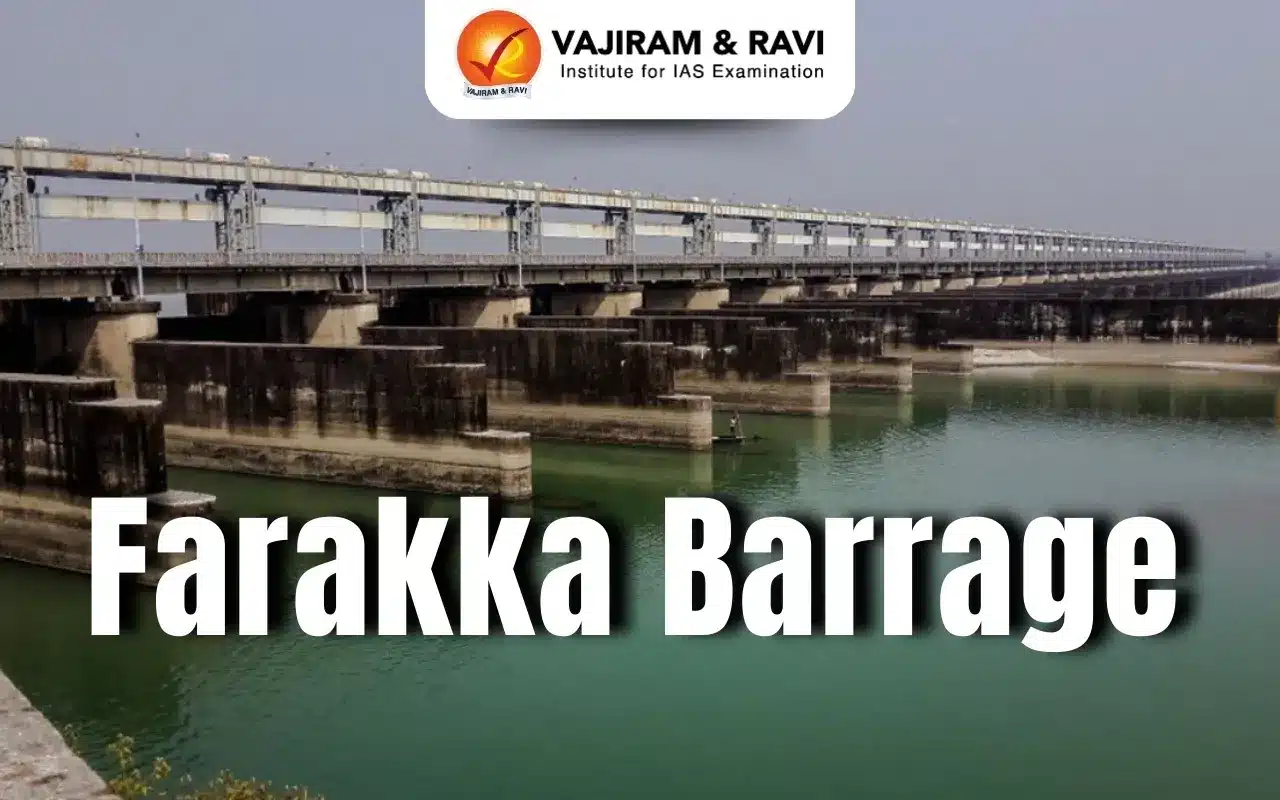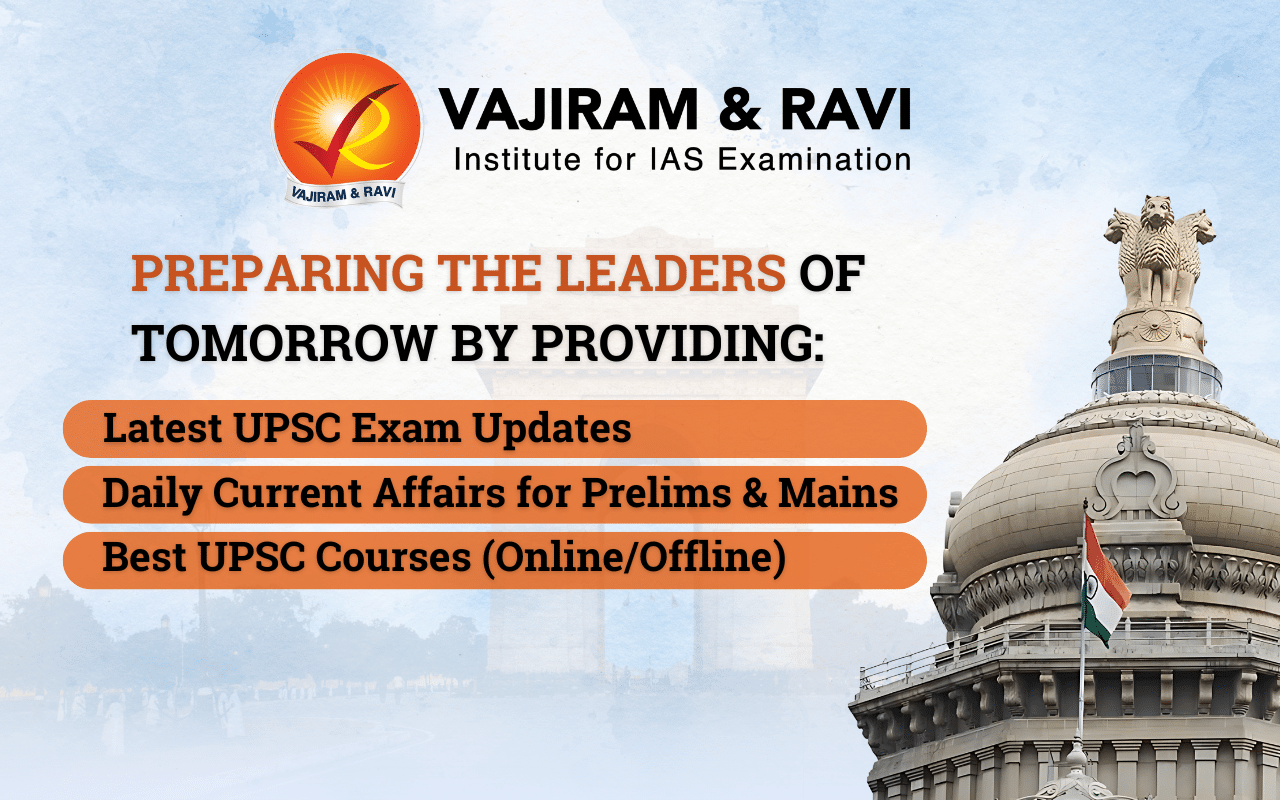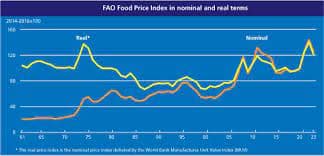Farakka Barrage Latest News
Farakka Barrage was commissioned in 1975, and the 50th anniversary of its operation is being observed in 2025.
About Farakka Barrage
- Location: Situated on the Ganga River in Murshidabad district, West Bengal, approximately 18 km from the Bangladesh border.
- Commissioning: Began operations on April 21, 1975, after 12 years of construction and an expenditure of ₹130 crores.
- Purpose: Diverts 40,000 cusecs of water into the Farakka Feeder Canal to flush out silt from the Bhagirathi-Hooghly River, ensuring smooth navigation for Kolkata Port.
- India and Bangladesh have had multiple agreements over Ganga water sharing, including the 1977 Farakka Agreement and the 1996 Ganga Water Treaty.
Hooghly River & Its Significance
- Also known as the Bhagirathi-Hooghly or Kati-Ganga River.
- A 260 km-long distributary of the Ganges.
- Formation: The Ganga splits in Murshidabad, with one branch forming the Padma River (flows into Bangladesh).
- The other becomes the Hooghly River, which flows through West Bengal.
Course & Hydrology
- Above Kolkata, the Hooghly River is heavily silted.
- The Farakka Feeder Canal supplies water, especially during the dry season.
- Rivers feeding Hooghly: Haldi, Ajay, Damodar, and Rupnarayan contribute to the lower Hooghly.
- Important Cities: Jiaganj, Azimganj, Murshidabad, Baharampur, Kolkata, and Howrah.
- Bridges:
- Howrah Bridge (Cantilever) between Howrah and Kolkata.
- Bally Bridge between Bally and Baranagar.
Farakka Barrage FAQs
Q1: What is the Farakka Barrage?
Ans: The Farakka Barrage is a dam constructed across the Ganges River in the Murshidabad district of West Bengal, India, approximately 18 kilometers upstream from the Bangladesh border. It was built to divert water from the Ganges into the Hooghly River to flush out sediment deposits and maintain the navigability of the Kolkata Port.
Q2: When was the Farakka Barrage constructed?
Ans: Construction of the Farakka Barrage commenced in 1961 and was completed in 1975. It became operational on April 21, 1975.
Q3: What are the main features of the Farakka Barrage?
Ans: The barrage spans approximately 2,240 meters and comprises 109 gates, each 18.3 meters wide. It also includes a feeder canal designed to divert up to 40,000 cusecs (1,135 cubic meters per second) of water from the Ganges to the Hooghly River.
Q4: What is the primary purpose of the Farakka Barrage?
Ans: The primary objective of the Farakka Barrage is to divert water from the Ganges into the Hooghly River to flush out sediment deposits and maintain the navigability of the Kolkata Port.
Source: TH
Last updated on July, 2025
→ UPSC Notification 2025 was released on 22nd January 2025.
→ UPSC Prelims Result 2025 is out now for the CSE held on 25 May 2025.
→ UPSC Prelims Question Paper 2025 and Unofficial Prelims Answer Key 2025 are available now.
→ UPSC Calendar 2026 is released on 15th May, 2025.
→ The UPSC Vacancy 2025 were released 1129, out of which 979 were for UPSC CSE and remaining 150 are for UPSC IFoS.
→ UPSC Mains 2025 will be conducted on 22nd August 2025.
→ UPSC Prelims 2026 will be conducted on 24th May, 2026 & UPSC Mains 2026 will be conducted on 21st August 2026.
→ The UPSC Selection Process is of 3 stages-Prelims, Mains and Interview.
→ UPSC Result 2024 is released with latest UPSC Marksheet 2024. Check Now!
→ UPSC Toppers List 2024 is released now. Shakti Dubey is UPSC AIR 1 2024 Topper.
→ Also check Best IAS Coaching in Delhi















